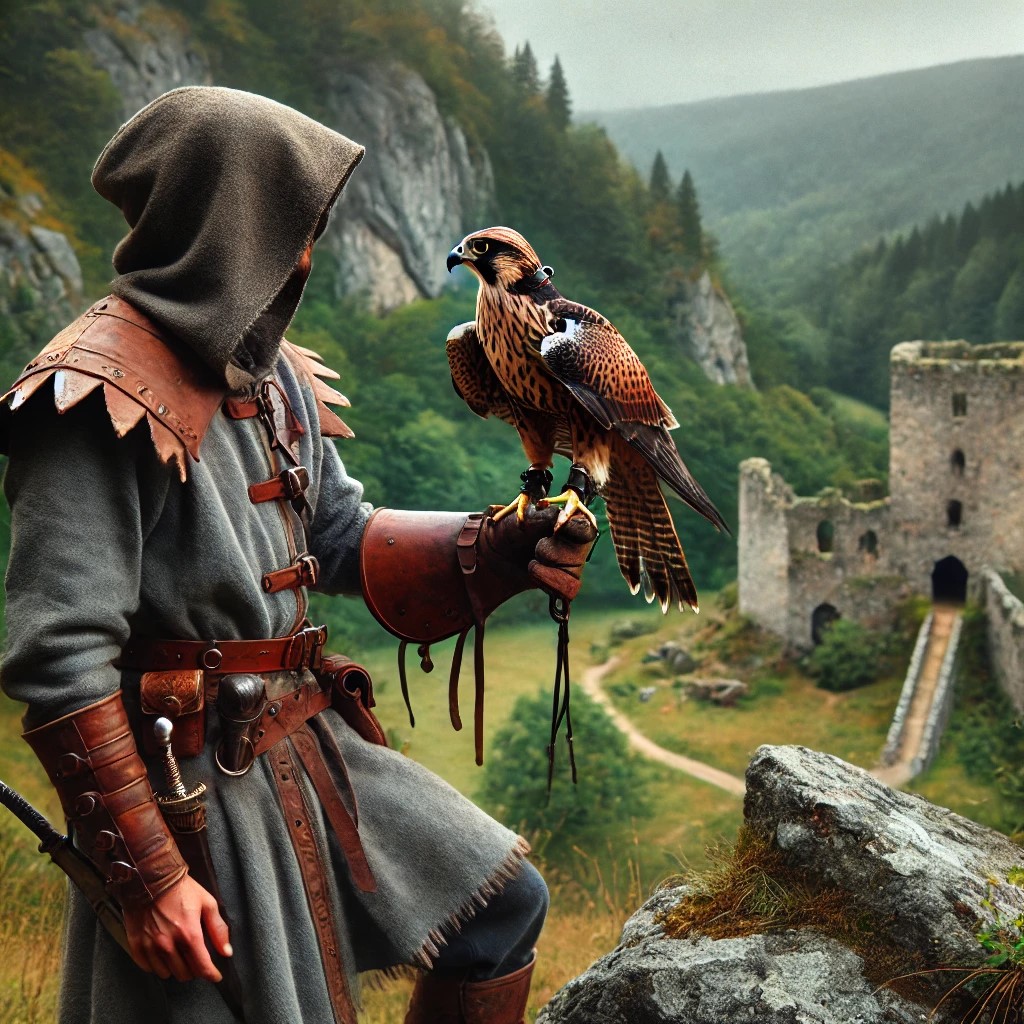Rouse to Hunt (sage ability)
Rouse to Hunt is an amateur-status sage ability in the study of Falconry, describing the act of releasing the bird from its perch or glove to persue prey. Before releasing the falcon, the falconer typically "rouses" the bird, a process meant to awaken or excite the falcon and prepare it mentally and physically for the hunt. This may involve gentle movements or sounds to alert the bird and get it ready for the upcoming activity. Once the falcon is roused, the falconer releases the bird with the intention of it pursuing and catching prey. The practice is one of ancient tradition, dating to the Sumerians of Mesopotamia.
Falcons are incredibly skilled hunters, using their keen eyesight, agility and speed to capture their target in flight, typically focusing on birds like game birds or waterfowl. Historically, falconry was a means of procuring fresh meat, particularly in regions where other hunting methods were less effective. Falcons catch their prey for sustenance, and the falconer may reward the bird by allowing it to feed on the catch or providing it with a portion of the prey as a form of reinforcement for its hunting behaviour. This encapsulates the partnership between human and bird, with the falcon's natural hunting instincts honed and directed by the falconer for mutual benefit.
Meat Taken
Should the falcon or hawk be managed by a character of amateur skill, the amount of meat that is likely to be taken in a day is not great. This supposes a vegetation beneficial to falconry, including ranges such as intertidal, rural, savanna, steppe and wetlands. Intended prey, which is particular to humanoids and does not include prey the falcon would hunt for itself (bats, lizards, snakes, insects), tends towards rabbits, fish and other birds. For an amateur, the amount of food taken per day by hunting alone amounts to 1 to 2 pounds of meat, counting from equinox to equinox. In temperate climes, between mid-December and early March, nothing is gained by this tactic.
Authorities understand better when to release the bird and in which direction; yet the amount of meat per day is still only 3-4 lbs. Yet there are better ways in which the falcon can be roused, where gathering food is concerned.
Spotting Prey
A trained falcon or hawk can be used to spot potential prey, especially in the air or from a high perch. Since these birds have exceptional vision, they can spot larger prey that can be tracked and hunted from great distances. Once the falcon or hawk spots potential game, it can either dive in pursuit or signal to the falconer that it has seen something by becoming more alert or focused on the prey. For most birds of prey used in falconry, once the bird spots prey from its elevated position (and this may be within 2 miles of the bird), the falconer or companions on the ground can typically spot the falcon if they are within 800 to 1,600 yards.
The bird "signals" to the falconer or others on the ground in several subtle ways, using its body language and flight behavior. These signals can vary — for example, a perched bird can potentially see up to two miles or more, depending on the environmental conditions, and the size of the prey. The signal manifests as an "intense focus": the bird locks its eyes onto the target, conveying to the falconer with a change in posture that the bird has located something interesting. Some bird species will call out, producing a loud and unmistakable sign that the bird has found something worth pursuing.
In the air, the bird adjusts its flight patterns, either slowing down, hovering in place, or flying in tight circles above the area where it sees the prey. This change in flight is a clear indication to the falconer that the bird has spotted something. In some cases, the bird repeatedly dives in the direction the falconer should go, interrupting these dives and climbing again, rather than coming all the way to the ground.
Should a predator or a disturbance is nearby when the bird is perched, even when hooded, the bird will show agitation or heightened awareness, raising its head, fluffing its feathers or shifting its position to get a better view. This change in behavior signals that the bird has spotted something and is preparing itself.
Flushing Prey
Falcons and hawks can also be used to flush game out of hiding, making them highly valuable in hunting dense or difficult-to-navigate terrains. This method is particularly useful in areas where prey may be concealed in thick cover like tall grass, dense underbrush, or woodland areas. In these environments, prey animals such as small mammals, game birds, or even reptiles often rely on camouflage or hiding to evade predators.
To begin this process, the falconer or another hunting companion will release the bird into the area of dense cover. The bird, often with an instinctual drive to flush out prey, will begin to search the area. As the falcon or hawk moves through the brush or flies low over the ground, it disturbs the habitat enough to startle or flush out hidden prey. The bird’s swift movements and powerful wings may cause small mammals, like rabbits, squirrels, or mice, to leap out of their hiding spots, and ground-dwelling birds, such as quail or pheasants, to take flight. Once the prey is startled into movement, it becomes vulnerable, as it may be forced to flee in a more predictable pattern or be caught in mid-flight by the falcon.
See also,
Animal Training (sage field)
Assassin Sage Abilities
Fighter Sage Abilities
Paladin Sage Abilities
Ranger Sage Abilities
